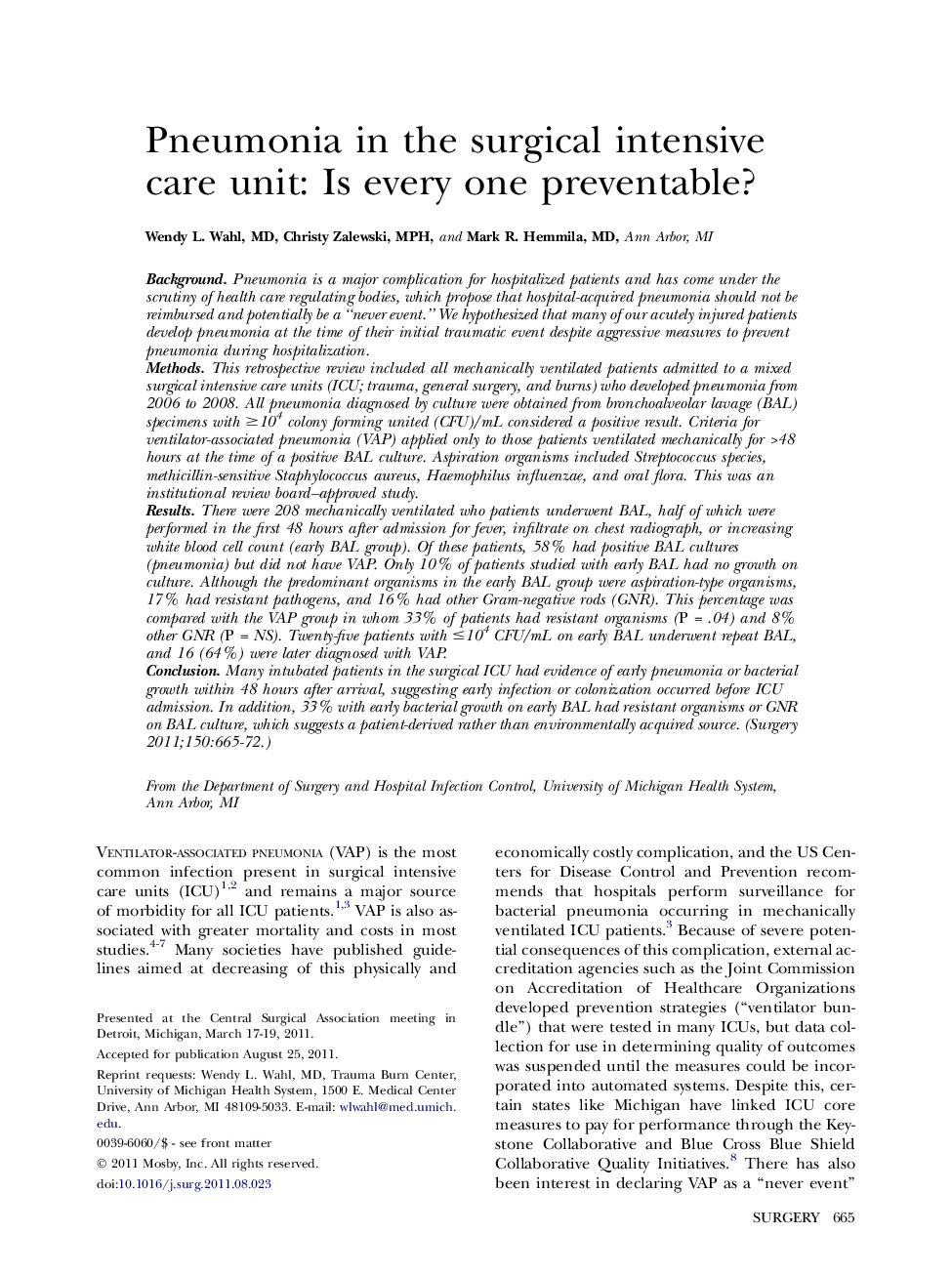| Article ID | Journal | Published Year | Pages | File Type |
|---|---|---|---|---|
| 4308568 | Surgery | 2011 | 8 Pages |
BackgroundPneumonia is a major complication for hospitalized patients and has come under the scrutiny of health care regulating bodies, which propose that hospital-acquired pneumonia should not be reimbursed and potentially be a “never event.” We hypothesized that many of our acutely injured patients develop pneumonia at the time of their initial traumatic event despite aggressive measures to prevent pneumonia during hospitalization.MethodsThis retrospective review included all mechanically ventilated patients admitted to a mixed surgical intensive care units (ICU; trauma, general surgery, and burns) who developed pneumonia from 2006 to 2008. All pneumonia diagnosed by culture were obtained from bronchoalveolar lavage (BAL) specimens with ≥104 colony forming united (CFU)/mL considered a positive result. Criteria for ventilator-associated pneumonia (VAP) applied only to those patients ventilated mechanically for >48 hours at the time of a positive BAL culture. Aspiration organisms included Streptococcus species, methicillin-sensitive Staphylococcus aureus, Haemophilus influenzae, and oral flora. This was an institutional review board–approved study.ResultsThere were 208 mechanically ventilated who patients underwent BAL, half of which were performed in the first 48 hours after admission for fever, infiltrate on chest radiograph, or increasing white blood cell count (early BAL group). Of these patients, 58% had positive BAL cultures (pneumonia) but did not have VAP. Only 10% of patients studied with early BAL had no growth on culture. Although the predominant organisms in the early BAL group were aspiration-type organisms, 17% had resistant pathogens, and 16% had other Gram-negative rods (GNR). This percentage was compared with the VAP group in whom 33% of patients had resistant organisms (P = .04) and 8% other GNR (P = NS). Twenty-five patients with ≤104 CFU/mL on early BAL underwent repeat BAL, and 16 (64%) were later diagnosed with VAP.ConclusionMany intubated patients in the surgical ICU had evidence of early pneumonia or bacterial growth within 48 hours after arrival, suggesting early infection or colonization occurred before ICU admission. In addition, 33% with early bacterial growth on early BAL had resistant organisms or GNR on BAL culture, which suggests a patient-derived rather than environmentally acquired source.
